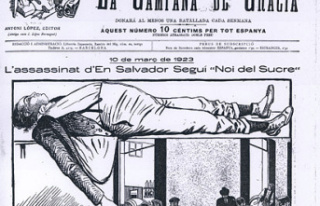The Personal Income Tax (IRPF) is the tax that comes on the scene when we have to settle accounts with the Treasury, an appointment that in 2023 begins on April 11, when the period opens to request the draft and present the Income statement 2022.
Personal income tax is of a personal nature and the personal and family circumstances of the taxpayer are taken into account. It is a progressive tax, whose percentage (tax rate) varies more than proportionally to the variation in the income that is taxed (taxable base). It favors people with lower income or at risk, some of whom are even exempt from paying this tax, while it will be higher for taxpayers with higher incomes.
In the 2022 Income campaign, workers with incomes of less than 22,000 euros per year from a single source of income will be exempt from submitting the declaration. For those who have had two or more payers, those who have deposited a maximum of 14,000 euros from a first payer and a maximum of 1,500 from other payers will not have to make the Rent.
Although the Tax Agency is in charge of collecting this tax (except in the Basque Country and Navarra), personal income tax is partially assigned to the autonomous communities, so each region has its own deductions (for housing, maternity, children, etc.) . In this way, the final percentage paid is divided into two sections, one state and the other regional.
In this sense, the Panorama study of regional and regional taxation 2023, prepared by the Register of Tax Advisory Economists (REAF), points out that today no community presents an IRPF rate exactly the same as the state one and that even in many cases do not even coincide in the number of sections.
Community rates differ from state rates (9.5 to 24.5%). Regarding the minimum, six of the common regime have the same as the state one, another six have set it below and for the remaining three it is higher, reports Efe.
The IRPF brackets indicate what percentage of taxes each taxpayer must pay. These increase as your gross income increases:
It must be taken into account that the income for which the tax is paid is net income, that is, after deducting the expenses necessary to obtain it, such as Social Security contributions and passive rights. In the Income campaign, the Treasury takes into account the circumstances existing on the date of accrual of the tax, that is, on December 31 of each year.
The aim is to quantify the personal circumstances of each taxpayer, as well as the labor and patrimonial circumstances of the family members who live with the taxpayer (spouse, children, grandchildren and great-grandchildren), so that income from work and economic activities is taken into account ( wages, salaries...); to capital returns (furniture, real estate, stock dividends, interest from bank accounts...) and capital gains and losses.
According to the criteria of The Trust Project












